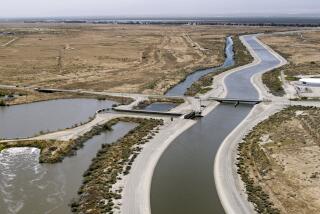Gov. expected to declare California’s drought over
Gov. Jerry Brown is about to make official what a winter of downpours and rising reservoir levels have already made obvious: California’s drought is over.
Brown is expected to lift the state’s 3-year-old drought declaration Wednesday, when the next snow survey is conducted.
In a statement released Monday, the governor’s office said it “is waiting for the season’s final snow survey later this week to officially rescind the previous administration’s drought declaration. While this season’s surplus of rain and strong snowpack has clearly ended the dry spell for now, it is critical that Californians continue to conserve water.”
The drought ended from a hydrological perspective last year, but state officials said they were not ready to declare it over because reservoir storage had not fully recovered and this year might turn dry.
It has been anything but. Dam operators have been ramping up releases from the state’s reservoirs this month, water managers have repeatedly upped projections of summer deliveries, and as of Friday, the all-important Sierra Nevada snowpack was 159% of normal for this time of year.
“We are looking at a good water supply year as we prepare for this summer’s peak demand period,” state Department of Water Resources Director Mark Cowin said last week.
The State Water Project, which sends Northern California water to the Southland, has increased expected deliveries to 70% of requests, up from 50% last year and 35% in 2008.
The Central Valley Project, which supplies much of Central Valley agriculture with irrigation deliveries, is promising most districts 100% of their allocations. Monday, the federal Bureau of Reclamation announced that San Joaquin Valley farms that suffered the most severe cutbacks during the drought would get 65% of their allocations — slightly more than they have received on average during the past two decades.
The winter was bookended by heavy storms, which defied predictions of La Niña conditions and below-average precipitation.
Storage in most of the state’s major reservoirs is above normal for the date. Lake Oroville in Butte County, the State Water Project’s principal reservoir, is 81% full. Shasta Lake north of Redding, the largest reservoir in the federal system, is at 92% of capacity.
More to Read
Start your day right
Sign up for Essential California for news, features and recommendations from the L.A. Times and beyond in your inbox six days a week.
You may occasionally receive promotional content from the Los Angeles Times.







